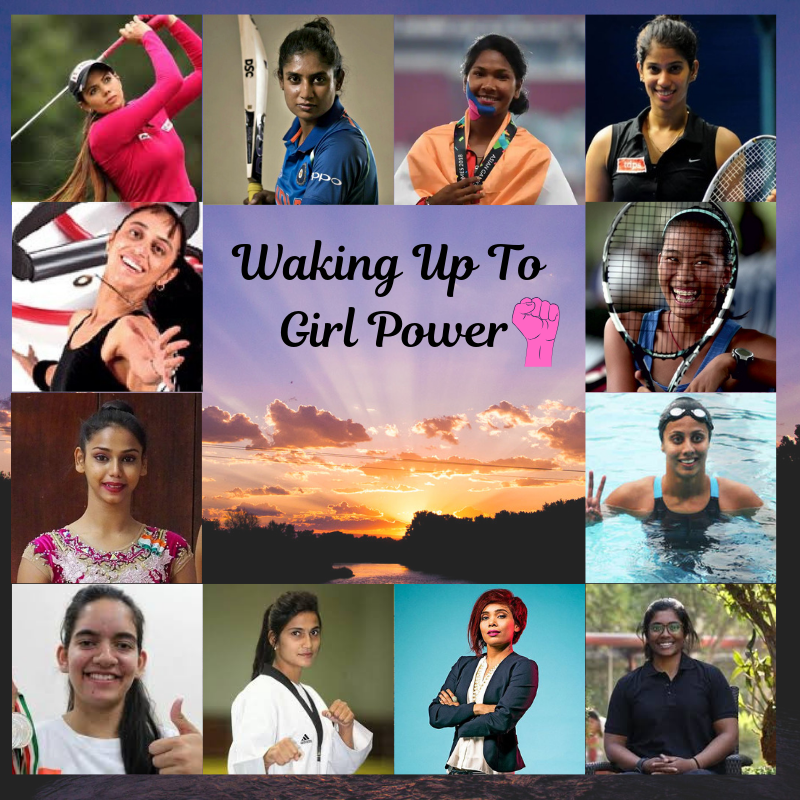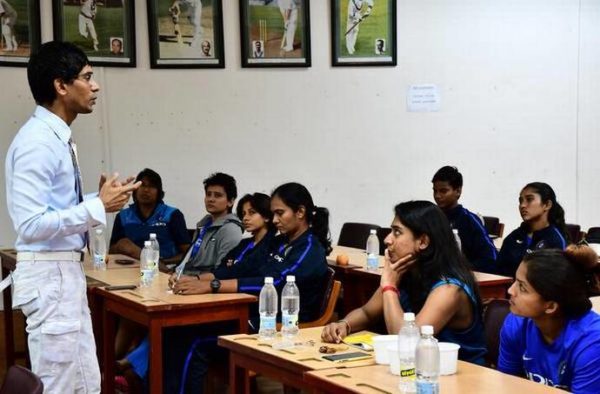


I recently spent two days with the Indian women’s cricket team, educating the players on the nuances of eating as an athlete. I found that their grit and resolve was no way lesser than that of the Olympic medalist, Sushil Kumar. One could see the hunger to win in their eyes. During a relaxed morning spent laughing and learning, one realized that each of these players have a unique culture, mind and dream. However, their nutrition or sports diet was playing catch-up to their intense training at the National Cricket Academy.
Even after two hours of solid seminar and education work, the team, led by Mithali Raj, was eager to digest every morsel of food science and supplement guidelines. I felt like an ‘information chef’ being gobbled up by this pack of hungry stars! A stark realization then hit me — the women fared better than the men at the Rio Olympics, and parents are waking up to Daughter Power.

Nutrition is a science that is just making inroads into these athletes’ purview. The focus of sports nutrition is now largely being driven by the organisations, coaches, physiotherapists or trainers. Nutrition for the women cricketers, or for any female athlete, is paramount. Unlike men, women have hormones and menstrual cycles that affect the body, mind and the way food is eaten. A female athlete needs to divide her nutrition into the following areas of focus:
1. Nutrition for female health: This includes protein, vitamins and minerals for the normal functioning of the female body. For example, women lose blood during their cycles, and hence hemoglobin levels as well as other related parameters dip. It is important that nutrition keeps pace with the constant transition that the female body goes through every month. Vitamin D and B12 are also heavily loaded towards conferring a better health. When hemoglobin is low, female athletes will tire out faster due to lower oxygen carrying capacity. A simple technique is to add dates, figs and spirulina to their diet. Also, over a few months if levels do not improve, the female athlete should look at doing a gluten and a lactose DNA test to determine whether her intestinal linings are really in the best of health or damaged due to the intake of wrong foods.
For all female athletes I recommend that milk be avoided. Instead, curd or alternatives like almond or soya milk can be used if you are looking to address additional protein requirements during training. For all those young daughters, I advise only organic milk. Cows that are injected with hormones to increase milk production, carry over these hormones into the milk. This plays havoc with the female reproductive hormones. In fact, girls get their growth & height spurt before attaining puberty. However, due to these hormones from the milk they reach puberty earlier than they should and may miss out on the growth spurt.
Just think back a few generations, our grandmothers attained puberty between 14 and 15 years, but now it’s as low as 8-10 years.
Switch to organic milk; or no milk at all.
2. Nutrition for recovery & performance: As in the case of all athletes, the training regime is repetitive, and players come back to the grind everyday. Whether in training or match situations the body is constantly flogged to push beyond the normal boundaries of energy expenditure and metabolism. Most girls feel that if they eat too much they will increase weight around their hips. So they avoid eating too much. Feeding the muscles ensures recovery, not to mention fat burning.
A lot of time women practice hard but hydrate very little due to bad or no toilets, and end up burning out due to lack of good eating habits and hydration. Thanks to the WhatsApp food diaries I have with some of the women cricketers, I noticed a lack of colorful fruits and vegetables when they sent photographs of the food they ate. Red, purple, green, yellow and orange are all colors from foods that contain nutritional molecules that help in the healing of muscles and ligaments. Over a week of tracking food showed that the food diary of the cricketers needed an update!
Five servings of whole fruits every day is my advice to all women athletes.
3. Nutrition on the go: Most athletes live out of their suitcases. When I asked the women cricketers what their home base is in a year, pat came the reply: “Our suitcases are our home, and you can send the nutrition plan to the hotel.”
Every athlete needs to travel to compete. The more you succeed, the more you have to travel. It’s the travel, change of time zones, and ultimately change of cuisine or food type that realigns the athlete’s gut for better or worse. Athletes constantly complain to me that it is so difficult to eat when on tour. They, however, will ensure that their kit, their internet connections and other basic necessities are arranged. Dry fruits, protein powder, calling in advance and networking with the hotel kitchen is frowned upon. “Sir, we have no time,” is the refrain.
Nutrition makes up 6-8 segments of eating every day. The highest number of structured and scientific eating sessions in an athlete will go towards fuelling the body. Eating nutritiously is the most compromised training; it is completely ignored.
Arrange to eat right, and plan right, and your body will become a smoothly-functioning machine.
4. Nutrition for beauty: Every woman wants to look beautiful. Skin and hair are the first to go when nutrition is ignored. Hydration, too, plays a crucial role in detoxing the body and giving every woman a glow. The hair and skin are made of certain proteins like keratin and collagen. When we eat protein our body digests this raw material into amino acids. These are the basic units of every cell. These amino acids are re-jigged and re-synthesised into new body proteins including, skin, hair, ligaments, cartilage and every other cells, even your blood. If the girl athlete trains hard, but does not compensate the protein and vitamins well, the body, over 3-6 months, allows for the hair and skin to be ignored. Priority for day-in and day-out training will shift to the muscles and the cardiovascular system. Hence, supplementing your body with the right amount of protein post workout not only enables the muscles to recover and strengthens ligaments and cartilage, but also makes the hair lustrous.
As they retire, women athletes have to focus on their health as sports has a damaging impact on body-weight as they age. If a girl athlete does not take care of her sports diet during her younger years, issues such as PCOD, skin problems and higher fat percentages will crop up. In extreme cases, doping with steroids may result in infertility. It’s therefore paramount that every female athlete in the country is supported with organic food, the best nutritional supplements and above all, a nutrition coaching to develop a disciplined eating habit through life.
With the women bringing all the glory for India at the last Olympics, I think it’s time we focused more on the girls with a “woman sports diet plan”.
©2023 All Rights Reserved Ryan Fernando. Designed and Developed by Floral Web Services